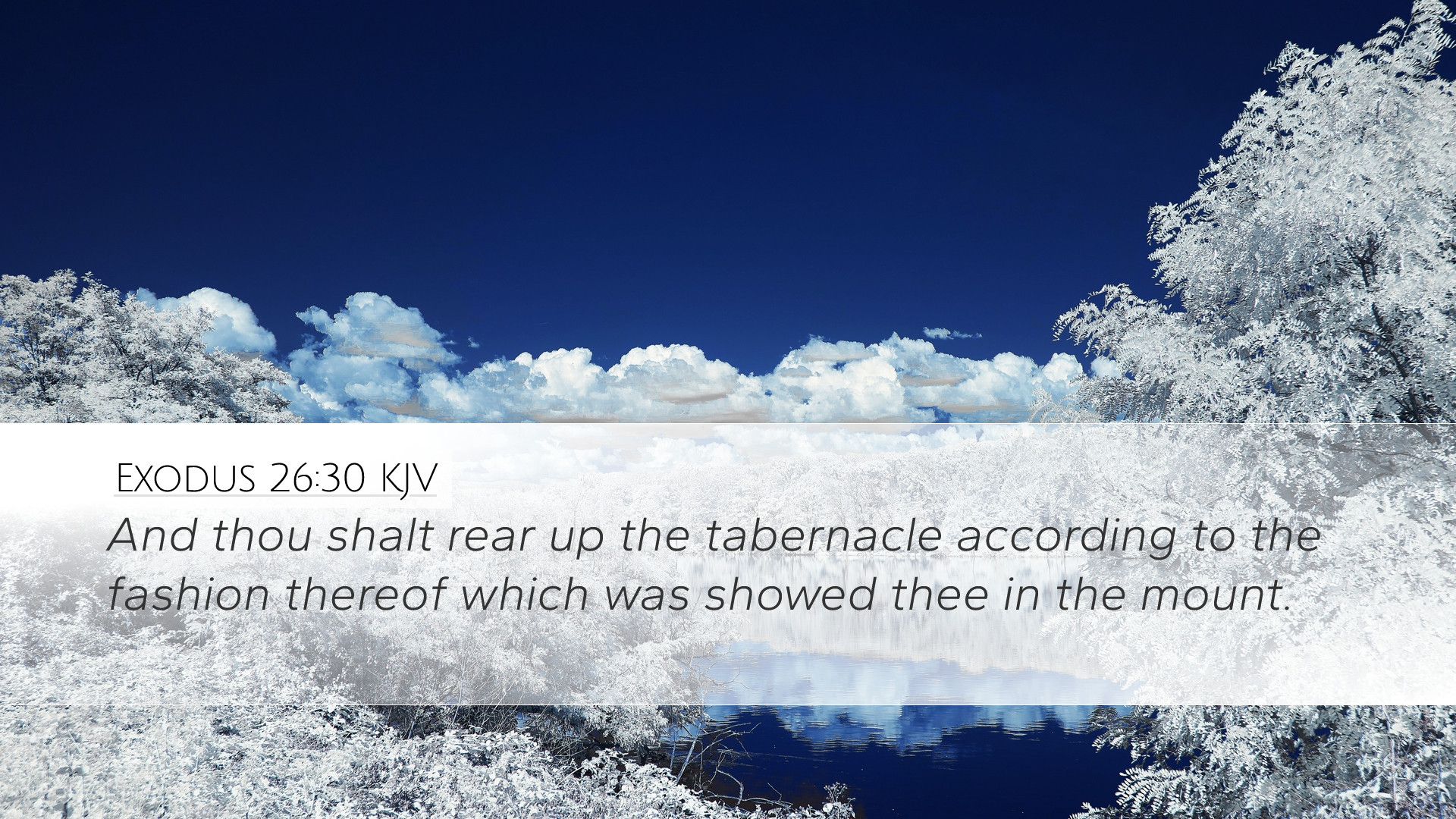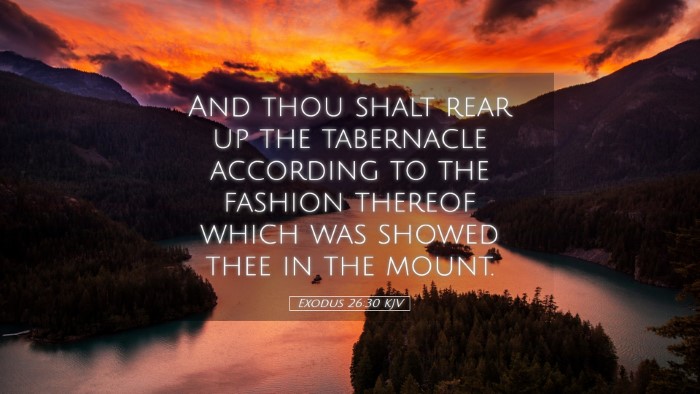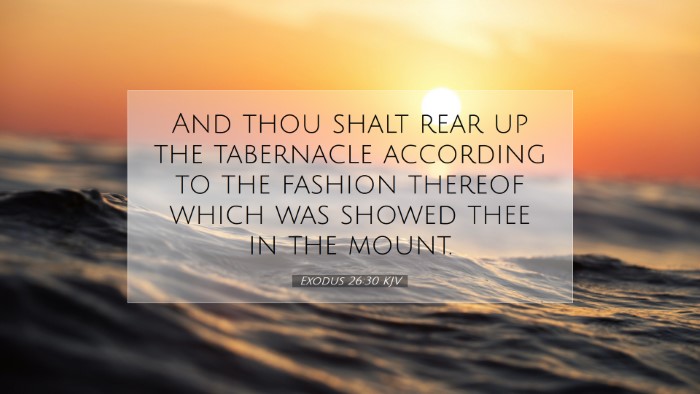Commentary on Exodus 26:30
Bible Verse: "And thou shalt rear up the tabernacle according to the fashion thereof which was showed thee in the mount." (Exodus 26:30)
Introduction
The construction of the Tabernacle represents a pivotal moment in the history of Israel. Exodus 26:30 serves as a directive to Moses to meticulously assemble the Tabernacle as prescribed by divine revelation. This verse is a culmination of God’s instructions and foreshadows the importance of divine order and heavenly patterns within the worship of the Lord. Insights from respected public domain commentaries will illuminate the significance of this verse, offering a multifaceted theological interpretation.
Divine Design and Human Responsibility
This verse underscores the intersection between divine instruction and human execution. Matthew Henry emphasizes that God provides specific patterns for worship, indicating that, while human agents play a role, they must adhere strictly to God's designs. This notion is reinforced throughout Scripture where God's instructions are not merely suggestions but imperative for the fulfillment of His plans.
Matthew Henry's Perspective
Henry articulates that Moses is commanded to construct the Tabernacle as a dwelling for God among His people. The verse highlights the importance of following divine blueprint precisely, revealing God’s desire for orderliness in worship. This attentiveness to divine patterns was intended to communicate the holiness of God and the seriousness of approaching Him.
Albert Barnes' Insights
Barnes elaborates that the Tabernacle was a symbol of God's presence. The careful arrangement of the Tabernacle serves to remind the Israelites of the sacredness of their relationship with God. He notes that adherence to the prescriptive patterns is not only about structural integrity but also about spiritual fidelity. The blueprint provided “in the mount” emphasizes divine authority in matters of worship, reinforcing the principle that God alone dictates the manner in which He is to be approached.
Adam Clarke's Contributions
Clarke expresses that the instructional aspect of Exodus 26:30 reflects God’s providential care and concern for His people. He advocates that this command imparts significant theological themes such as God’s desire to dwell among His people and the importance of obedience. Clarke notes the exhortation to construct the Tabernacle according to the divine vision not only calls for skillful work but also denotes a spiritual responsibility that permeates all aspects of life and worship.
Theological Themes
- Obedience to God’s Commands: The emphasis on constructing the Tabernacle "according to the fashion" conveys a critical theological tenet: God's people are called to obey His commands without alteration or modification. This theme resonates throughout Scripture, where obedience is fundamental to covenant relationship with God.
- God’s Immanence: The directive to build a Tabernacle manifests God's desire to dwell among His people. This concept is pivotal in understanding the relational dynamics between God and humanity, where God seeks intimacy and presence among His creation.
- Reflecting Heavenly Patterns: The Tabernacle serves as an earthly replica of a heavenly model. The precision required in its construction signifies the importance of reflecting divine order in worship and everyday life. This heavenly design emphasizes that worship should reflect God’s holiness and majesty.
Implications for Worship
The implications of Exodus 26:30 extend to various aspects of worship within the church today. The verse prompts a reevaluation of how congregations approach worship, ensuring that practices align with scriptural foundations and provide a space conducive to encountering the divine. The meticulous nature of the Tabernacle's design can inspire contemporary believers to seek depth, reverence, and intentionality in their worship practices.
Worship as a Response to Divine Initiative
Recognizing the Tabernacle as a response to God’s initiative places worship within the context of grace. The act of constructing the Tabernacle is not merely an obligation but a privilege bestowed upon the Israelites, reflecting God’s initiative to dwell among them. This perspective invites modern worshippers to respond to God's grace with reverence and a commitment to glorify Him authentically.
Conclusion
Exodus 26:30 stands as a powerful reminder of the relationship between divine instruction and human action. The insights from commentators like Matthew Henry, Albert Barnes, and Adam Clarke illuminate the sacredness of worship along with the necessity of obedience to God's prescribed order. As contemporary believers reflect on these truths, they are encouraged to align their worship with the patterns set forth in Scripture, fostering a deeper relationship with the Almighty who desires to dwell among His people.


